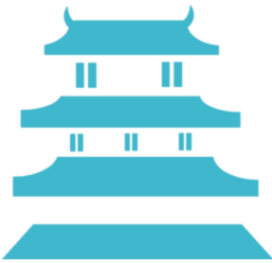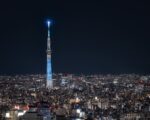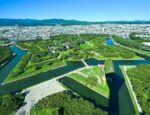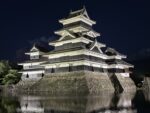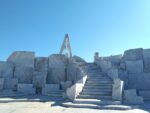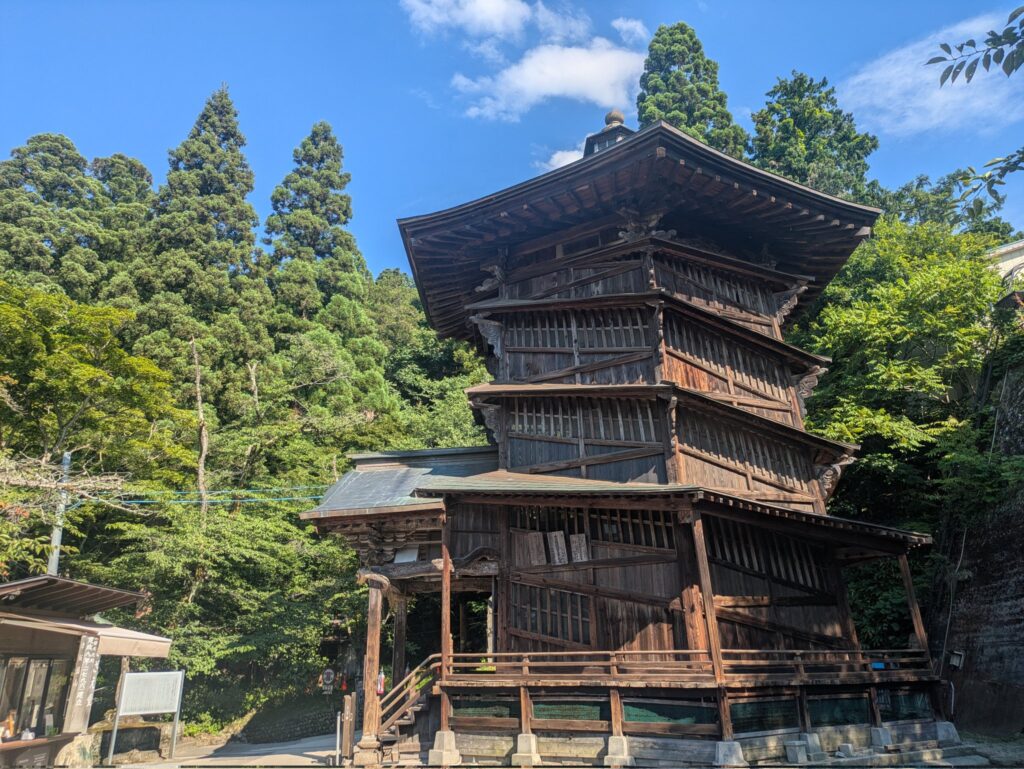
A Unique Temple Unlike Any Other in Japan
Hidden in the historic city of Aizuwakamatsu in Fukushima Prefecture, Aizu Sazae-dō (会津さざえ堂) is one of Japan’s most fascinating architectural wonders. Officially called Entsū Sansō-dō (円通三匝堂), this wooden pagoda was built in 1796 during the Edo period. Its nickname, Sazae-dō, means “turban shell temple,” referring to its spiral shape resembling a seashell.
A Double-Helix Design Ahead of Its Time
The temple’s most remarkable feature is its double-helix staircase, a design centuries ahead of modern architecture.
Visitors ascend a spiral path that never overlaps with the descending one — meaning you won’t encounter anyone coming down as you climb up. This clever design symbolizes a spiritual journey of enlightenment, where worshippers could circle through 33 Buddhist statues without retracing their steps, representing a pilgrimage to 33 Kannon temples of western Japan.
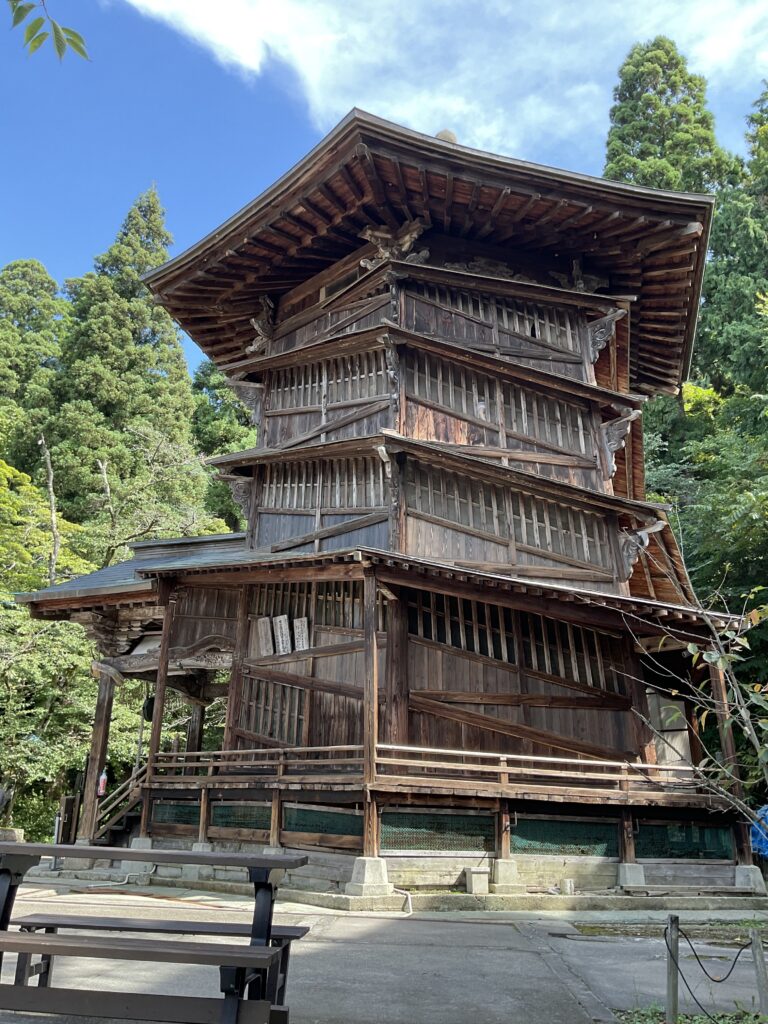
A Journey Through History
Sazae-dō once housed 33 statues of Kannon (the Goddess of Mercy), allowing devotees to complete a symbolic pilgrimage without leaving Aizu. Although the statues were later removed due to government religious reforms in the Meiji era, the structure remains an important cultural asset and a Nationally Designated Important Cultural Property since 1996.
Inside the Temple: Layers of History
As you climb the wooden spiral slope, you’ll notice that the walls are completely covered with old paper amulets (お札, ofuda).
These amulets were once placed by pilgrims to mark their spiritual visit — much like leaving a footprint of faith.
Many of them bear the names of temples, deities, or prayers for good fortune, protection, and safe travels.
Though faded with time, these countless paper talismans give the interior a mystical and almost otherworldly atmosphere, making visitors feel the weight of centuries of devotion.
The dim light filtering through wooden slats adds to the experience, transporting you back to Edo-period Japan.
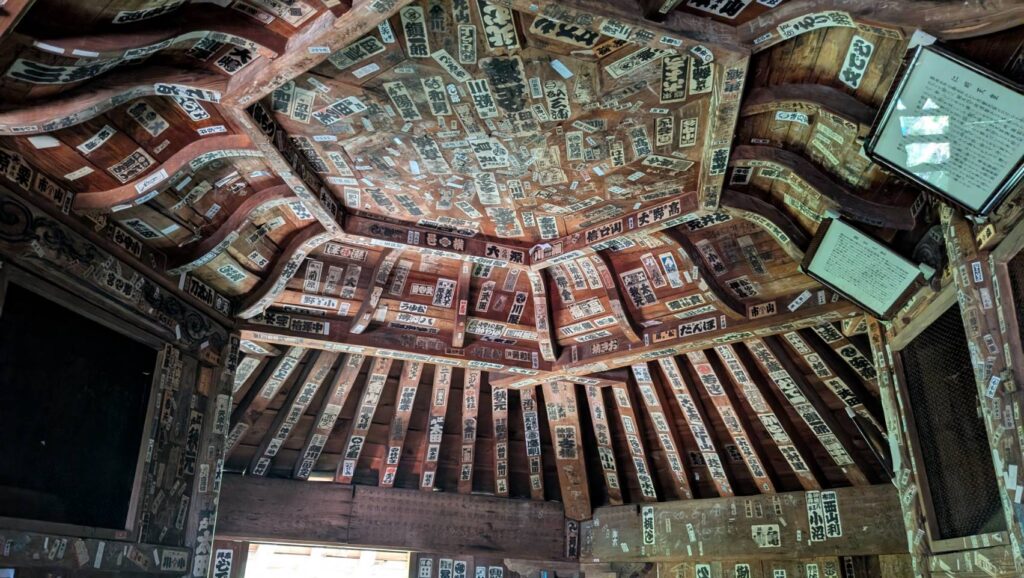
Why You Should Visit
- Unique Architecture: Nowhere else in the world has a wooden temple with a double-spiral structure like this.
- Spiritual Atmosphere: The walls covered in ancient amulets tell silent stories of thousands of pilgrims.
- Photogenic Spot: The spiral ramps and rustic wooden beams create dramatic photo opportunities.
- Historic Setting: Located near Iimoriyama Hill, the site is also known for its connection to the Byakkotai (White Tiger Corps), young samurai who fought during the Boshin War.
Visitor Information
- Address: 155 Ikkimachi Yahata Bentenshita, Aizuwakamatsu, Fukushima
- Opening Hours: 8:15 AM – Sunset (varies by season)
- Admission Fee:
- Adults: ¥400
- High school students: ¥300
- Elementary students: ¥200
- Closed: Open year-round
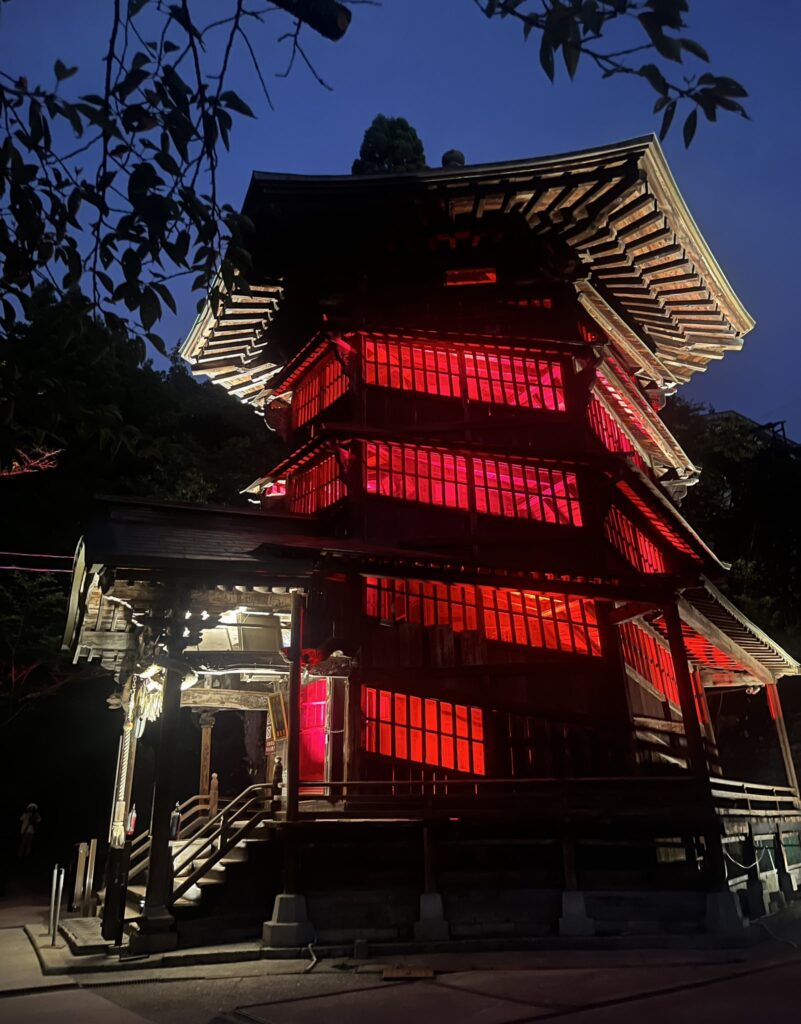
Access
- By Train:
Take the JR Ban-etsu West Line to Aizuwakamatsu Station, then a 10-minute taxi ride or 20-minute bus ride to Iimoriyama. - By Car:
About 15 minutes from Aizuwakamatsu IC on the Ban-etsu Expressway. Paid parking is available nearby.
Travel Tips
- Combine your visit with Iimoriyama Shrine and the Byakkotai Memorial Hall for a full day of Aizu history.
- Visit in autumn for colorful foliage or in winter to see the temple beautifully dusted with snow.
- The spiral slope can be slightly steep, so wear comfortable shoes.
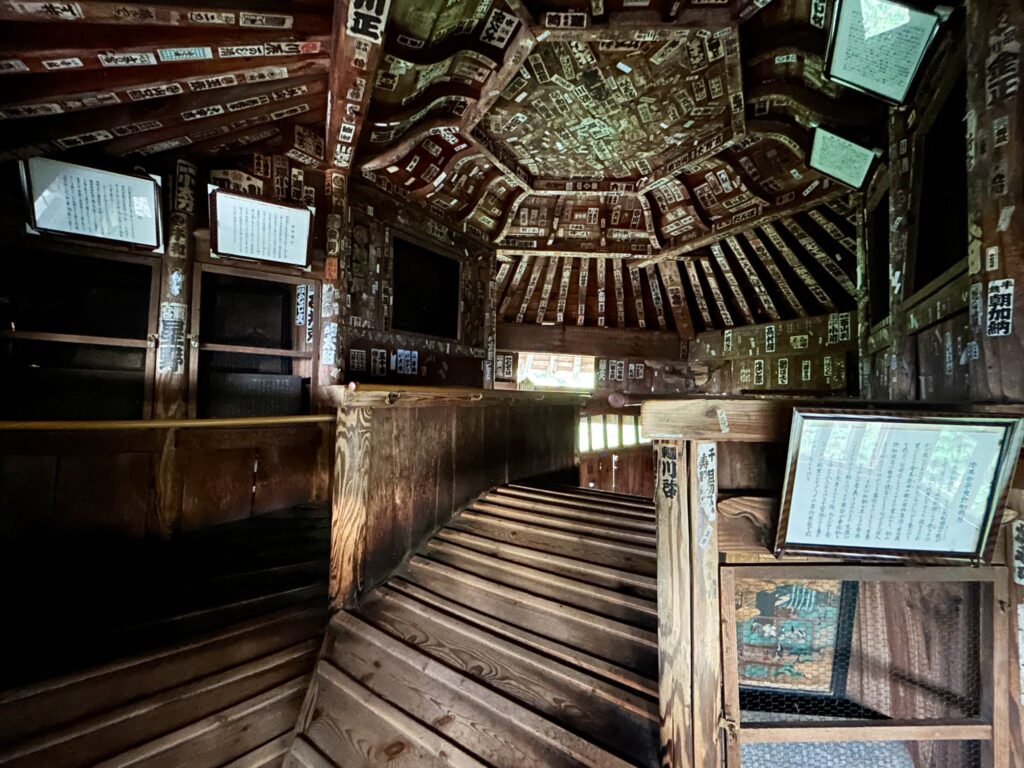
Summary
Aizu Sazae-dō is more than just a temple — it’s a rare masterpiece blending spirituality, symbolism, and architectural innovation. The spiral structure, coupled with the countless ofuda adorning its interior, embodies centuries of faith and devotion. For travelers seeking a hidden gem rich in atmosphere and history, this is one of Fukushima’s most unforgettable sites.
Alcoholic beverage Anime April Architecture August Autumn Building Capital Area Cherry blossom February Flower Hokkaido January Japanese food July Kinki kyoto Local ramen Manga March Nagoya Nature Nightlife Night view October Osaka Photogenic Pink Red September Shopping Shrine Souvenir Spring Station Summer Superb view Temple Tips Tohoku Tokai Tokyo Torii White Winter

